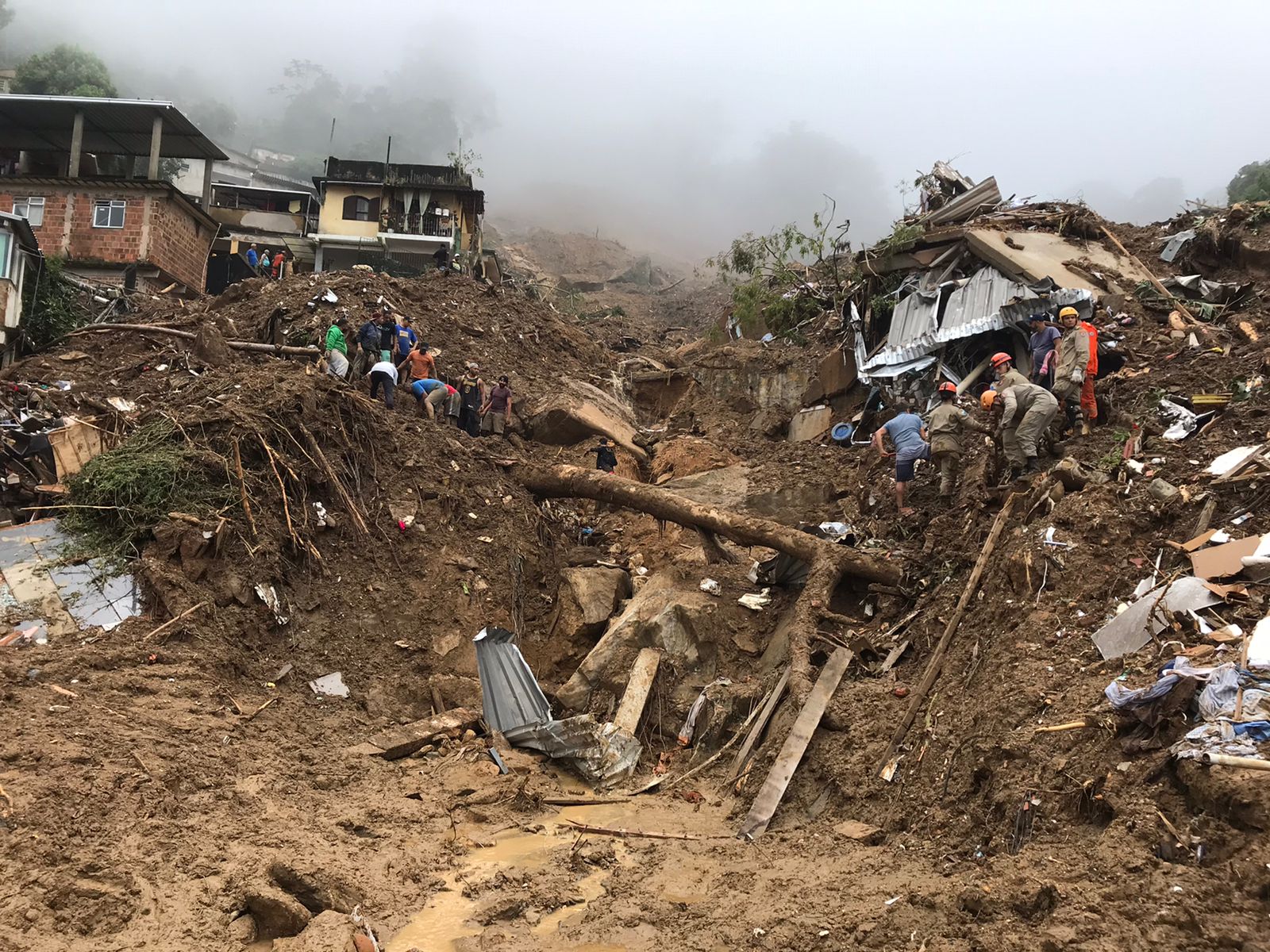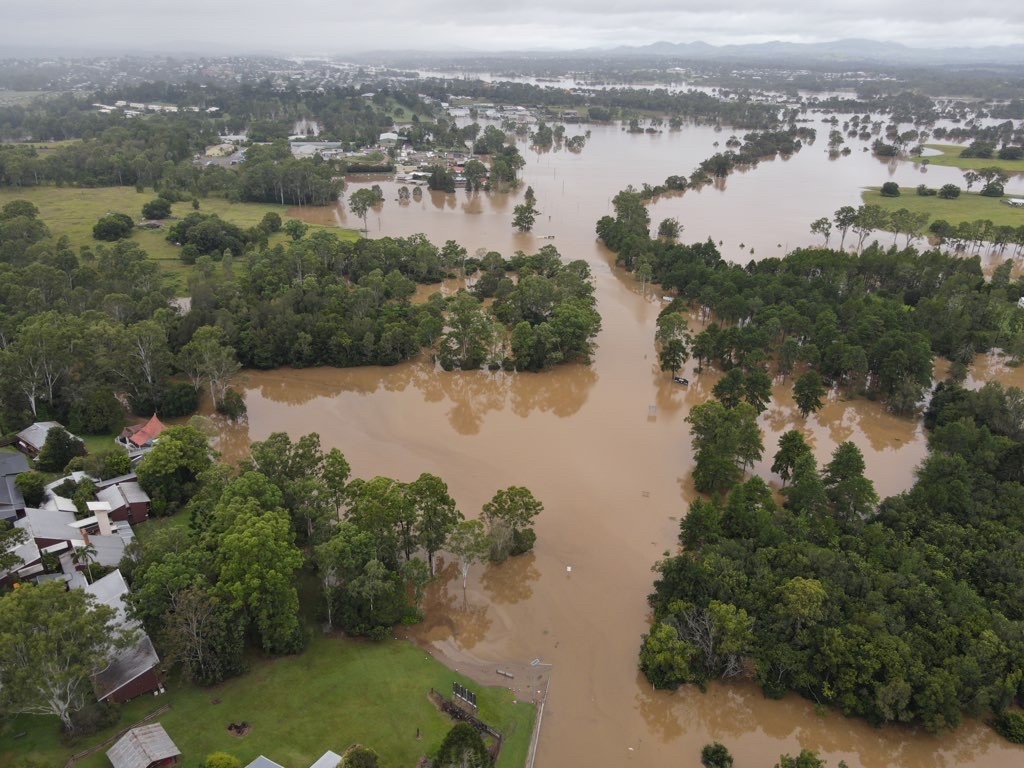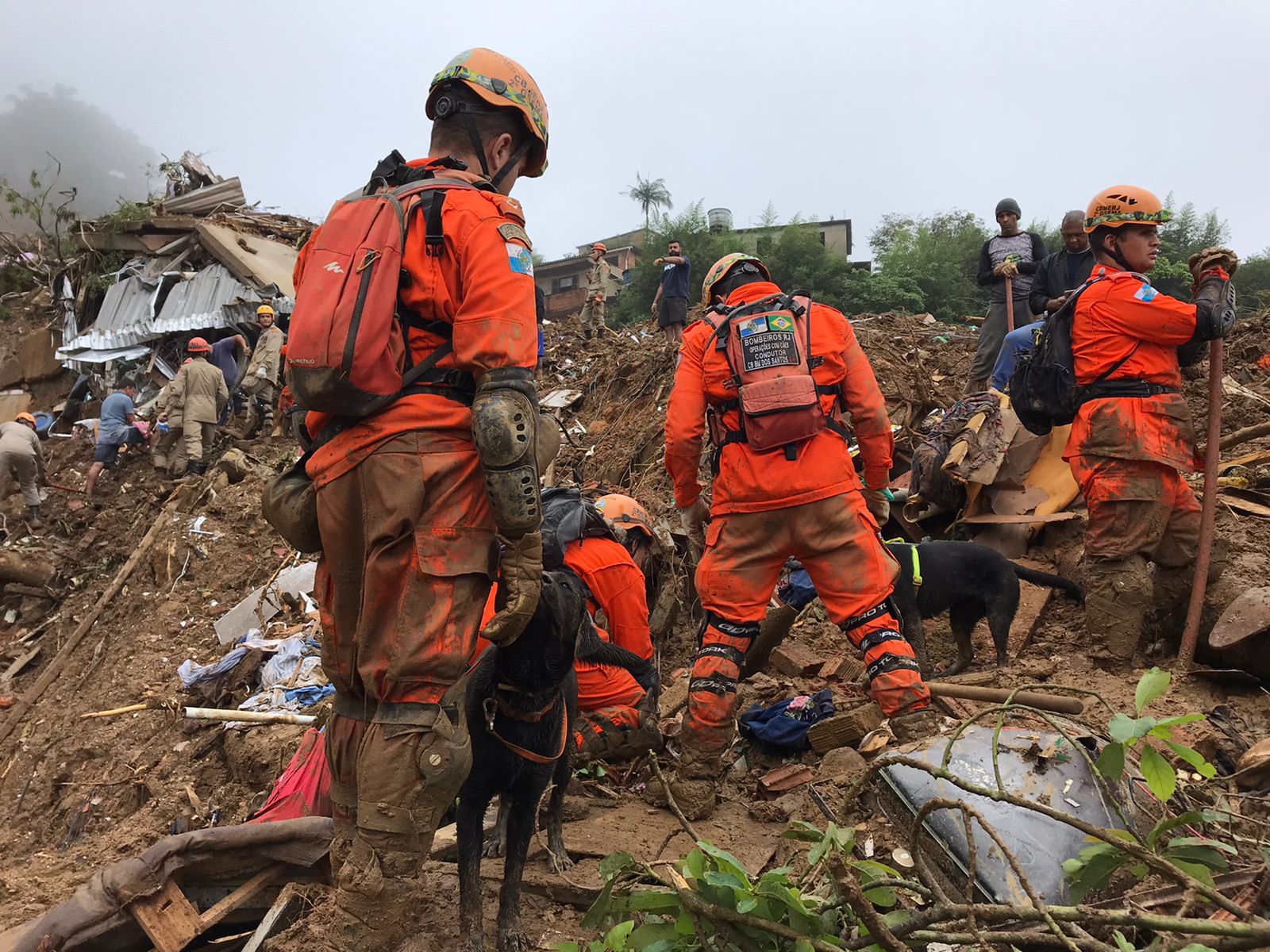

Heavy rains plagued Brazil over the last few months.
Three hours of extremely heavy rain on Feb. 15, led to more than 250 landslides, including mudslides that caused mass destruction in Petrópolis, a city built on a hillside like many low-income neighborhoods in Brazil. As the area expanded, people with less resources built their homes on the sides of the mountains, leading to drainage problems and deforestation of the land. In 2017, Petrópolis’s government commissioned a study that found that slightly more than 15,000 homes would be placed at risk by heavy rain.
The mudslides took everything in their path: cars, homes and people. Petrópolis is located 70 miles north of Rio de Janeiro’s beaches and is a popular tourist destination.
The Civil Defense of Rio said more rain was recorded in a few hours on Feb. 15 than typically occurs in the whole month of February. The governor said it is the worst rain in more than 90 years.
(Photo credit: State of Rio de Janeiro Military Fire Brigade via Twitter)
While experts say increased rainfall is linked to climate change and weather, the growth of the city is also to blame for the disaster. According to the New York Times, “‘What we saw was a really extreme event,’ said Cássia de Castro Martins Ferreira, a researcher at the Federal University of Juiz de Fora, who studies extreme weather events in the region. ‘It didn’t rain — it was an extraordinary amount of water that poured down’ … ‘We have an enormous number of extreme weather events in Petrópolis, related exactly to its location,’ she said. But another risk, she said, ‘is the way that the city has grown.’ As Petrópolis has expanded, residents have moved into the hills, clearing forests that once acted as a buffer against mudslides and building homes on terrain that is often too steep and unsuitable for development.”
Brazil has a crisis of housing that stems from the late 19th century when Brazil abolished slavery but didn’t provide freed Africans with any place to live. The first favelas – low-income communities surrounding urban areas in Brazil – developed along the wharf in Rio de Janeiro and then spread to the hills and mountains. These communities are proud but poor, and full of people who are unable to access the formal housing market in Brazil due to economic resources.
According to the Washington Post, “Between 1985 and 2020, the amount of land occupied by favelas in Brazil nearly doubled … [ favelas] have always suffered disproportionately during natural disasters. But as rains and floods increase in frequency and ferocity, scientists expect them to become still more vulnerable to tragedy.”
In 2011, landslides that hit the same region were declared Brazil’s worst disaster. More than 800 people died, nearly 9,000 were rendered homeless and at least 21,000 people abandoned their housing for fear of further mudslides. This was the largest catastrophe in Petrópolis since the 171 deaths from storms in 1988.
Latest Updates

How La Niña and climate change are fueling disasters
Who is affected and in what ways?
As of Feb. 28, 231 people had been confirmed dead with five still missing. Of the 231, 94 were men and 137 were women; 44 of these were minors. While searches continue for the five missing, it is a recovery mission only. There were 93 fatalities in Morro da Oficina, one of Petrópolis’ most affected areas. More than 3,000 people were rendered homeless due to the mudslide. Numerous small businesses were also destroyed. There were still nearly 1,000 people still living in school-based shelters, as of Feb. 28.
How did climate change exacerbate this disaster?
According to the Washington Post: “Brazil, like much of the world, is increasingly being forced to reckon with the everyday impacts of climate change. Scientists say it is largely responsible for the extreme weather events that have recently struck the country — first intense droughts, then punishing rains, and now flooding from north to south that has left hundreds dead. Late on the afternoon of Feb. 15, in the cloud-cloaked mountains of Petrópolis, a historic city 44 miles northeast of Rio de Janeiro, there began a downpour. Within hours, a month’s worth of rain had saturated the city. The surge unleashed floods and mudslides … and made starkly clear how defenseless the favelas of Brazil will be in a new era of destabilizing climate change.”
Local Brazilian organizations and international nongovernmental organizations (NGOs) on the ground will be providing as many services as possible.
Direct cash assistance
The most critical ongoing need is unrestricted cash donations to support emergency housing for affected families. Many people lost everything in the mudslides. Direct cash assistance can allow families to purchase items and services that address their multiple needs. It gives each family flexibility and choice, ensuring that support is relevant and timely. Cash assistance can also help move families faster towards rebuilding their lives.
Immediate needs
Those whose homes have been damaged will need support with food/nutrition, water, sanitation and hygiene (WASH), mental and physical health, restoration of livelihoods and shelter. Protection of vulnerable individuals is also a priority concern. COVID-19 support will also be needed to be factored into the response and recovery.
Long-term needs
In addition to immediate response, long-term recovery needs include rebuilding of homes and community infrastructure and economic recovery.

The Center for Disaster Philanthropy has a Global Recovery Fund that provides an opportunity for donors to meet the ongoing and ever-expanding challenges presented by global crises.
Contact CDP
Philanthropic contributions
If you would like to make a donation to the CDP Global Recovery Fund, please contact development.
Recovery updates
If you are a responding NGO or a donor, please send updates on how you are working on recovery from this disaster to Tanya Gulliver-Garcia.
We welcome the republication of our content. Please credit the Center for Disaster Philanthropy.
Donor recommendations
If you are a donor looking for recommendations on how to help with disaster recovery, please email Regine A. Webster.
More Ways to Help
As with most disasters, cash donations are recommended by disaster experts as they allow for on-the-ground agencies to direct funds to the greatest area of need, support economic recovery and ensure donation management does not detract from disaster recovery needs.
CDP has also created a list of suggestions for foundations to consider related to disaster giving. These include:
- Take the long view: Even while focusing on immediate needs, remember that it will take some time for the full range of needs to emerge. Be patient in planning for disaster funding. Recovery will take a long time and funding will be needed throughout.
- Recognize there are places private philanthropy can help that government agencies might not: Private funders have opportunities to develop innovative solutions to help prevent or mitigate future disasters that the government cannot execute.
- All funders are disaster philanthropists: Even if your organization does not work in a particular geographic area or fund immediate relief efforts, you can look for ways to tie disaster funding into your existing mission. If you focus on education, health, children or vulnerable populations, disasters present prime opportunities for funding.
- Ask the experts: If you are considering supporting an organization that is positioned to work in an affected area, do some research. CDP and InterAction can provide resources and guidance about organizations working in affected communities.
Related resources

Landslides
Landslides are a movement of a mass of rock, debris or earth down a slope. Landslides are a type of ‘mass wasting,’ which denotes any down-slope movement of soil and rock under the direct influence of gravity.

Is your community prepared for a disaster?
Explore the Disaster Playbook